James_R
New Member
Hey everyone,
I could really use some advice regarding some serious issues with my recent fish order and tank losses. Here’s the full story:
Two days ago, I received a group of fish, including:
One of the otos appeared adult-sized, so I decided to add it to the main tank directly instead of the quarantine tank.
Unfortunately, I wasn’t aware that the fish arrived in breather bags, which shouldn’t be floated during acclimation as it can block oxygen exchange. Despite what I thought were proper precautions, I lost both dwarf neon rainbows and 5 out of the 10 rummynose tetras yesterday. They showed swim bladder issues, which I initially attributed to the stress of shipping or acclimation. The remaining rummynose tetras weren’t eating, and one was breathing heavily. Meanwhile, the emperor tetras and otos didn’t show the same symptoms—they remained active and were eating as usual, though I did notice the otos had red-tinted gills, which is concerning and not normal.
Today, things worsened. I came home to find one of my Boesmani Rainbowfish dead in the main tank with a fuzzy body and enlarged gills. I remembered that the otos, including the one I placed in the main tank, had pinkish gills when it first arrived, but I didn’t think much of it then, assuming it was natural coloration. Now, several of my fish, including the Boesmani and Dwarf Neon Rainbowfish, and the new gouramis have developed slightly enlarged, red-tinted gills—a clear sign that something is wrong.
Additionally, I lost two male Cherry Barbs and a small platy from the main tank. They were found near the filter inlet, bloated around their gills and belly.
In the quarantine tank, another Rummynose Tetra has died, and one of the remaining four has developed swim bladder issues, along with rapid fin rot that I noticed about 2 hours ago. The rest of the Emperor Tetras and otos in the quarantine tank seem active, but the red gills on the otos are still a bad sign.
I dosed PraziPro today an hour ago, suspecting gill flukes. I’m beginning to believe the swim bladder problems and fin rot could be secondary infections caused by the stress of gill flukes. I’m feeling overwhelmed by all these losses and regret adding the oto to the main tank without quarantining it first. I’ve dealt with columnaris and camallanus before, and I promised myself I wouldn’t skip quarantine again—but here I am.
Has anyone experienced something similar? What else can I do at this point? Any guidance would be appreciated.
Fish Losses: Day 1:
I could really use some advice regarding some serious issues with my recent fish order and tank losses. Here’s the full story:
Two days ago, I received a group of fish, including:
- Dwarf Neon Rainbowfish x2
- Emperor Tetra x12 (+2 extra, so 14 total)
- Rummynose Tetra x9 (+1 extra, so 10 total)
- Otocinclus x6
- Dwarf Gourami 3x
One of the otos appeared adult-sized, so I decided to add it to the main tank directly instead of the quarantine tank.
Unfortunately, I wasn’t aware that the fish arrived in breather bags, which shouldn’t be floated during acclimation as it can block oxygen exchange. Despite what I thought were proper precautions, I lost both dwarf neon rainbows and 5 out of the 10 rummynose tetras yesterday. They showed swim bladder issues, which I initially attributed to the stress of shipping or acclimation. The remaining rummynose tetras weren’t eating, and one was breathing heavily. Meanwhile, the emperor tetras and otos didn’t show the same symptoms—they remained active and were eating as usual, though I did notice the otos had red-tinted gills, which is concerning and not normal.
Today, things worsened. I came home to find one of my Boesmani Rainbowfish dead in the main tank with a fuzzy body and enlarged gills. I remembered that the otos, including the one I placed in the main tank, had pinkish gills when it first arrived, but I didn’t think much of it then, assuming it was natural coloration. Now, several of my fish, including the Boesmani and Dwarf Neon Rainbowfish, and the new gouramis have developed slightly enlarged, red-tinted gills—a clear sign that something is wrong.
Additionally, I lost two male Cherry Barbs and a small platy from the main tank. They were found near the filter inlet, bloated around their gills and belly.
In the quarantine tank, another Rummynose Tetra has died, and one of the remaining four has developed swim bladder issues, along with rapid fin rot that I noticed about 2 hours ago. The rest of the Emperor Tetras and otos in the quarantine tank seem active, but the red gills on the otos are still a bad sign.
I dosed PraziPro today an hour ago, suspecting gill flukes. I’m beginning to believe the swim bladder problems and fin rot could be secondary infections caused by the stress of gill flukes. I’m feeling overwhelmed by all these losses and regret adding the oto to the main tank without quarantining it first. I’ve dealt with columnaris and camallanus before, and I promised myself I wouldn’t skip quarantine again—but here I am.
Has anyone experienced something similar? What else can I do at this point? Any guidance would be appreciated.
Fish Losses: Day 1:
- Dwarf Neon Rainbowfish x2
- Rummynose Tetras x5
- Boesmani Rainbowfish x1
- Cherry Barbs (male) x2
- Rummynose Tetra x1
Attachments
-
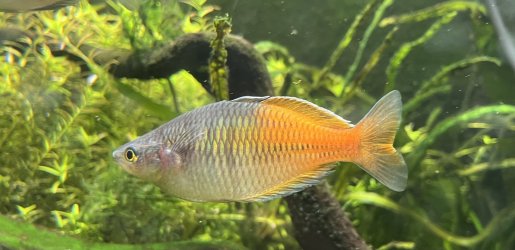 IMG_9340.jpg200.8 KB · Views: 41
IMG_9340.jpg200.8 KB · Views: 41 -
 IMG_9345.jpg392.5 KB · Views: 24
IMG_9345.jpg392.5 KB · Views: 24 -
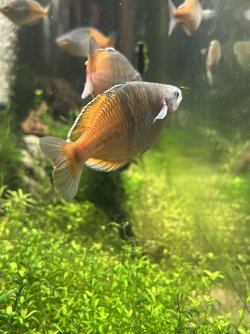 IMG_9346.jpg275.4 KB · Views: 22
IMG_9346.jpg275.4 KB · Views: 22 -
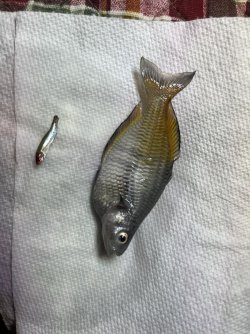 IMG_9339.jpg375.8 KB · Views: 24
IMG_9339.jpg375.8 KB · Views: 24 -
 IMG_9348.jpg309.9 KB · Views: 20
IMG_9348.jpg309.9 KB · Views: 20 -
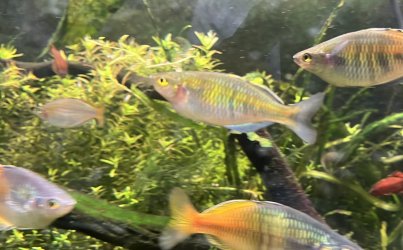 IMG_9342.jpg242.1 KB · Views: 24
IMG_9342.jpg242.1 KB · Views: 24 -
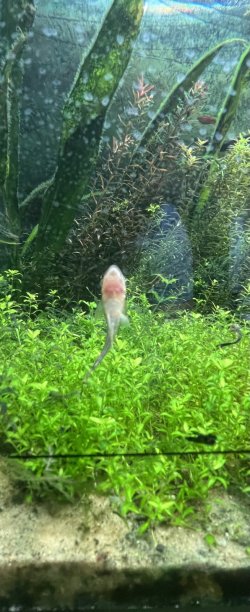 IMG_9337.jpg266.4 KB · Views: 22
IMG_9337.jpg266.4 KB · Views: 22 -
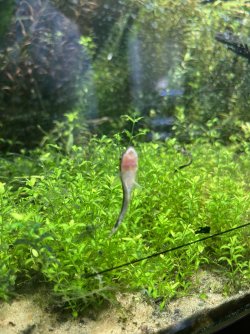 IMG_9338.jpg390.2 KB · Views: 24
IMG_9338.jpg390.2 KB · Views: 24 -
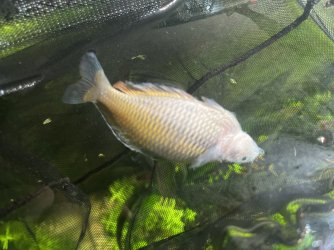 IMG_9328.jpg376 KB · Views: 24
IMG_9328.jpg376 KB · Views: 24 -
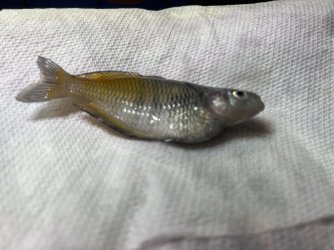 IMG_9331.jpg250.7 KB · Views: 24
IMG_9331.jpg250.7 KB · Views: 24 -
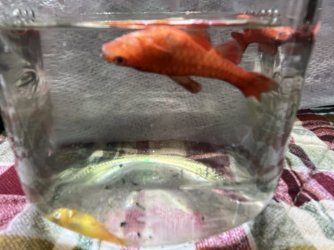 IMG_9326.jpg237 KB · Views: 26
IMG_9326.jpg237 KB · Views: 26
Last edited:

